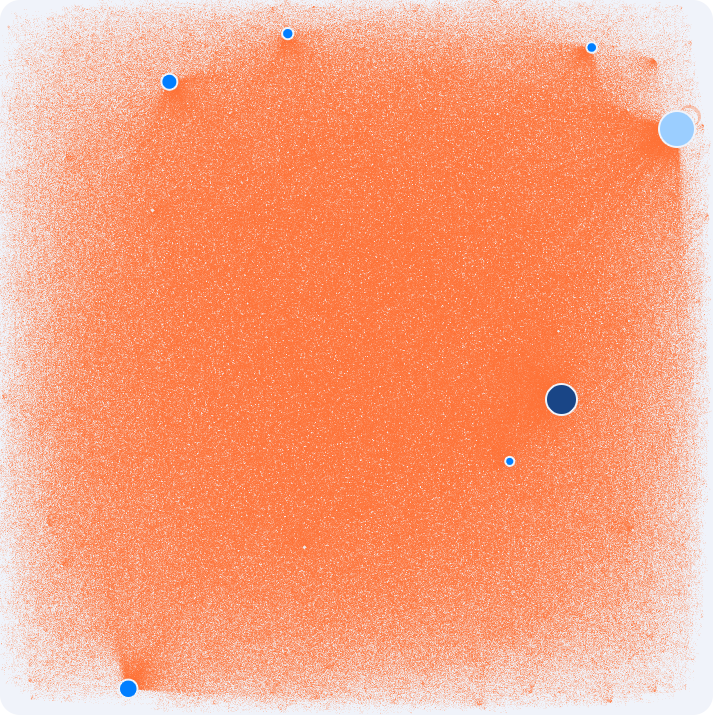An analysis of the first metrics Lens has generated over the past month
Overview
As we are approaching the first month of Lens, we decided to gather some insights from the rich amount of metrics this protocol has generated so far.
This is the first of a series of posts to make sense of the data coming out from the most used web3-native social network protocol.
Lens protocol is a social graph deployed on Polygon. In practical terms, it is a set of smart contracts replicating the building blocks of social networks. Its backbone is a web of interconnected NFTs, used to represent the most common social network interactions (profiles, follows, etc.).
Refer to the docs to learn more.
We collected and analyzed Lens data while working on Tide, a discovery and attention layer connecting users and projects based on interests and incentives. A social app everyone can use to build sustainable communities and engage them.
If this sounds exciting for your profile or even for the project you are building, reach out on **Discord **and Twitter.
In this analysis we cover:
-
Profiles utilization metrics
-
A rough estimation of fake profiles and fake activity
-
Insights about Lens network using social media analysis
Here’s a quick recap of our findings:
-
Profiles’ activity is very skewed, with most profiles rather inactive in terms of interactions
-
Bots account for at least about 7% of profiles and 8% of activity
-
Network analysis doesn’t show any meaningful clusters, with most followers concentrated around a handful of profile
Refer to this repo if you want to look at the codes used to produce this article.
General utilization metrics of profiles
At the time of writing, there are 28k profiles minted, according to Dune Analytics.
But how active are the profiles? The following chart summarizes the interactions:
-
Activity across metrics is really skewed (see also histograms below)
-
Interestingly, less than 50% of profiles haven’t been active yet in terms of posts, comments, mirrors, and collects
-
Mirror (sharing contents) appears to be the least used interaction
-
Average followers are almost 30% higher than following, as external wallets can follow profiles
A rough estimation of fake profiles and activity
The feed of Lenster, the most used Lens frontend, is plagued by low-quality contents such as:
-
Compulsive news sharing
-
Airdrops and tokens shilling
-
Spam images of half-naked people
The idea here is not to classify “bad” content, but only to provide an estimate of profiles that are not controlled by human beings or robots who love crypto.
In the interest of time and simplicity, we tried to find easy ways to spot suspected profiles by just looking at handles, bios, and activity per day. This approach is helpful in finding a realistic lower bound.
Here are some examples of profiles classified as bots:
Notice a pattern? Profiles with 8 consecutive numbers at the end of their handles are very likely to be fake, according to our repeated sample checks. These profiles amount for almost 7% of all profiles minted.
However, these profiles are relatively inactive when compared to the rest of the sample. As we noticed that in our feeds there is a lot of trash content, we did another type of analysis, targeting the profiles that look a little bit too active according to publications per day. We classified the accounts that make on average more than 30 publications per day as “spammers” (20 accounts, or 0.08% of total profiles). Here’s a comparison with the rest of the sample:

To recap, we found out that at least about 7% of profiles are bots and 13% of posts come from spamming profiles, which resonates with our user experience so far. Both numbers are to be intended as lower bounds.
Fake activity significantly worsens the user experience. If you are building filters and algorithms for spotting suspicious activity and profiles, we’d like to talk.
Social graph chart
The most natural way to analyze Lens data is by leveraging some techniques coming from the social network analysis, a branch of data science that exploits network structures to deliver insights about the population. In the following picture, the circles are the profiles (the larger, the higher the number of followers), while the lines represent a “following” relation.

Our main takeaway here is that profiles are not yet organized around visible clusters. There are a few big profiles (Yoginth, Lenster, Lens, Rabbithole, Piedrafita, Debridge), which capture the vast majority of followers. The platform has yet to see groups that form around specific topics.
… We are early!
Connect with us!
Tide:

